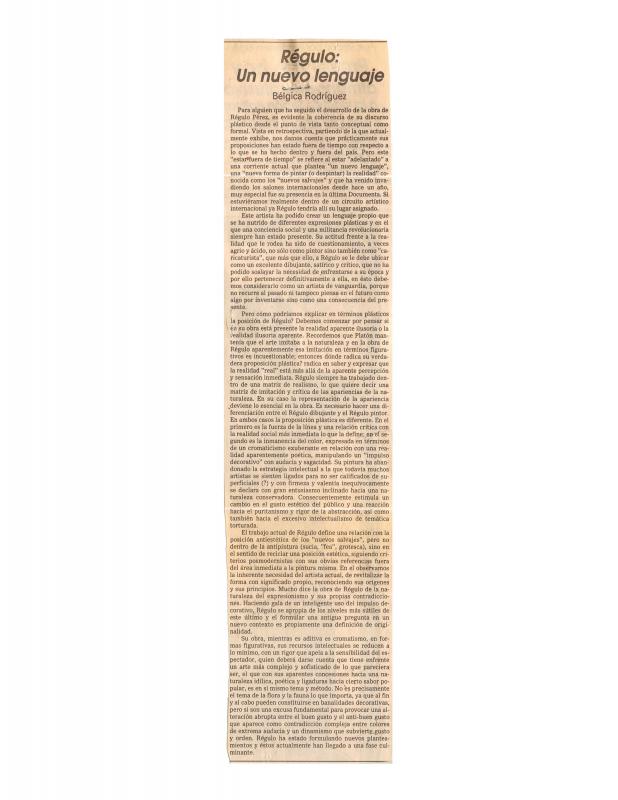The Venezuelan poet and historian Rafael Pineda (b. 1926) analyzes the artwork of Régulo Pérez (b. 1929) in connection with the exhibition, Régulo y el eje Orinoco–Pintura, held at the Sala de Arte Sidor in Ciudad Bolívar (1999). The show focused on the influence of the Orinoco River on the artist’s work.
In this article, Pineda studies the influences that affected the artist in the city where he was born. For example, he mentions the importance of river life on the Orinoco, the tropical colors, the Native presence, the “lottery” of animals he created on cardboard. In addition, there were sessions devoted to filming sessions and the whole experience of visualizing films, and certain situations the writer identifies as having a “dual context of the real world and the world of fantasy.” All these factors “opened Régulo’s eyes” to the “legend.” In general, in this article, Pineda offers a broader and more mature perspective on the artist’s work than that presented in his essay (“Naturaleza y cultura,” 1981). Given that it is more specific and focused on the influences that affected the artist, this text shows a fuller understanding of Régulo’s work. This allows us to see the links between the artist’s own world and the historical, ideological, and conceptual references that shaped his artistic outlook and style. To conclude the text, the writer sketches a chronology that has turned out to be one of the few sources to document Régulo Pérez’s artistic life.
In addition, Pineda was able to penetrate the artist’s pictorial world with another text, referred to above, “Naturaleza y cultura,” which is included in the catalogue, Flores y pájaros, montañas y ríos (Caracas: Galería Acquavella, 1981) [see ICAA digital archive doc. no. 1154268].
Regarding the work of Régulo Pérez, see the texts by Víctor Guédez, “La protesta vehemente y el sentimiento lírico en Régulo Pérez” (doc. no. 1154204); Bélgica Rodríguez, “Un nuevo lenguaje” (doc. no. 1157776); and Roberto Guevara, “Régulo y la cultura visual” (doc. no. 1157759).




